![]()
97 years ago, the residents of Burnley were shocked to the core after one of worst tragedies to befall them occurred on a wintery, cold mid-day on the 21st December 1923.
Burnley Corporation Tramcar Number 10, which was being driven by 47 year old, William Norris, had been out in use over in nearby Rosegrove before making its return to Lane Head. It had been a relatively normal morning, and just like most other days, no issues with the tramcar had been reported either prior to leaving the depot or during its use that day.
Norris had taken over the tram at around 11.15am at Duke Bar, Burnley before making his way up towards Rosegrove, leaving the Burnley Centre for Harle Syke at 11.55am.
Outside, it had been a cold morning with snow and ice patches forming on the roads and Norris was aware of the risks posed to the tramcar and therefore, journeys between the stops had taken a little longer than normal due to the poor travelling conditions.
Also out that day was 37 year old, Charles Lofthouse, a lorry driver working on behalf of haulage contractors, Messrs. John Stanworth and Bros, and he himself had been having some issues with the icy conditions, also at times being delayed visiting the mills he was delivering too, such as Spen Brook Mill which was further afield over at Newchurch-in-Pendle.
Approaching from the direction of Harle Syke, he was driving a wagon that was carrying a load of cloth weighing roughly 5 tons as he turned off Marsden Road and onto the incline of Briercliffe Road. It was just after noon and the area was becoming busy due to some children from nearby schools making their way to the stops to await the arrival of the tramcar.
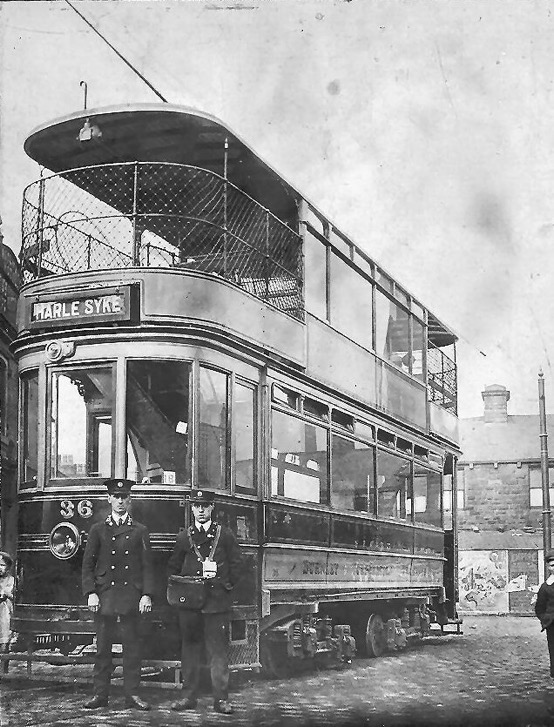
1914 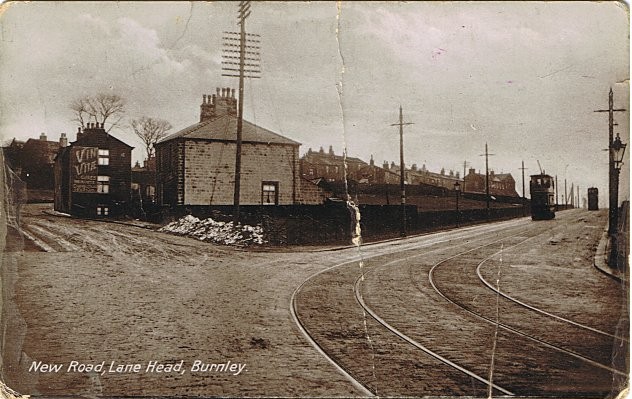
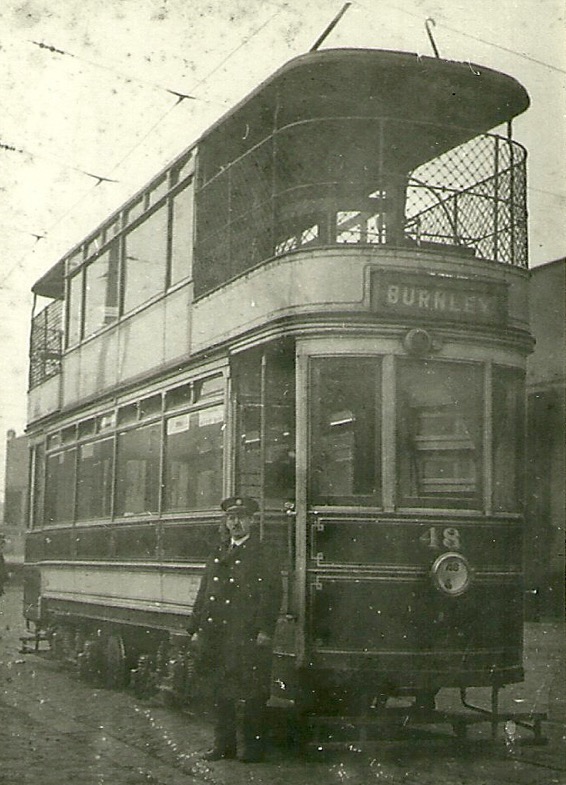
1933
Making its way slowly up Briercliffe Road and towards the junction leading onto Marsden Road, William Norris slowed the tram down as it approached what was known as the ‘roll over’. Coming in the opposite direction, Charles Lofthouse was making his way down the incline on the opposite side of the road.
Knowing how poor the road conditions where, Lofthouse was intermittently pressing down on the breaks, trying to keep his wagon from gaining speed, but as the wagon and the tramcar came within a few feet of each other, the rear of the wagon began to waver. Panicking, Lofthouse pressed down harder on the breaks but it was too late.
The wagon began to veer from side-to-side.
Out of control, it collied with the tram, smashing into the cabin windows on the drivers right hand side. Glass shattered onto several of the passengers and a metal side bar buckled with the impact.
Six bundles of cloth where flung from the wagon’s flatbed as the vehicle shunted forwards several feet before coming to a standstill, with one front wheel mounting a footpath and the other resting next to the kerb.
The impact was so strong that it had managed to push the tram backwards which forced it to slowly roll back down the tracks.
Two of the passengers on board where those of Jennie Eastwood and Gracie Whittaker, both of whom were travelling on the lower deck. Immediately after the collision, Gracie shouted over to Jennie, “Come along, Jenny!” but Jennie replied back, “No, I’m frightened!”
Norris then shouted to conductor, William Simpson, to, “Look after that child!”.
Gracie took hold of Jennie’s hand and together they quickly made their way over to Simpson.
“Try and drop them with faces upwards!” Norris frantically shouted.
Quickly, Simpson helped Gracie out of the tram, placing her on the ground outside but it was too late to do the same with Jennie as the tram had begun to pick up speed whilst making its way down Briercliffe Road, at one point travelling around 20mph.
Norris, began turning the tramcar wheel to try and stabilize it using the rheostatic break whilst William Simpson was frantically kicking sand out onto the line in the hope of slowing it down. All tramcars at this time carried a load of sand which would be used to prevent slippage at starts or when on gradients.
Norris, unable to do anything more in the drivers cabin began to rush past the travelling passengers to help Simpson who was now frantically trying to apply pressure to the breaks.
“Make room for me at that end!” shouted Norris as he pushed by the startled passengers.
At this point, a horse drawn coal lorry, driven by Mr. Thomas W. Atkinson was slowly making its way up towards Briercliffe Road, roughly seventy to eighty yards away but heading directly into the path of the tram. Norris and Simpson had barely no time to react, and as Norris reached the end of the tram where Williams was pulling hard on the breaks, the coal lorry was hurtled to one side as the tram smashed into the rear portion of it. Both men were thrown backwards and onto the floor from the impact of the collision. Norris was pinned next to the staircase with shattered glass now raining down on top of him. Simpson was in a similar position and with both men now unable to get back onto their feet, the tram was fully out of control.
The tram and its passengers stood no chance.
Careering further down the line until it reached a sharp bend and reaching a speed that was now approaching 40 mph, it left the metal rails and toppled over onto its side, making a thunderous crashing noise as it continued on its journey for a few more seconds before smashing into a corner shop on Sedberg Street.
The body of the tram was split into two and lay embedded in the window of Mr. Sunderlands shop. Most of the woodwork completely smashed into pieces with the staircase and iron work ripped from their supports.
Utter carnage ensued and as the many witnesses who heard and saw the events unfold rushed to help all those on board, things would only get much worse.
Henry Ashurst, an employee of the Burnley Corporation Tramways had been a passenger on the tram as it made its way up towards Lane Head, but he had dropped off the tram whilst it was in motion only seconds before it had collided with the wagon.
Seeing the tram beginning to roll back down Briercliffe Road, he realised a serious incident had occurred and hurriedly made his way down the road. He would see the tram topple over at the bend, leaving the rails and skidding into the shop at some speed.
Rushing over to the scene of the accident, the first person he found under the wreckage was that of William Simpson, conductor, who was lying around two yards inside the tram.
Ashurst assisted in removing Simpson from the wreckage but in doing so he noticed the severe injuries to his legs. Simpson was still conscious but was in obvious pain.
“Oh, mind my legs!” Simpson yelled at least four times when being lifted out of the debris.
Meanwhile, Dr. Munro, who had been passing by after returning from Nelson and only a few minutes after the accident had occurred quickly made his way to the horrific scene. Once there he was asked to attend to a young girl by the name of Ethel Pomfret who had been a passenger on the top deck of the tram.
After making his way around to where the corner shop was and where the tram had impacted the most, he climbed the wreckage and was horrified to see the body of Ethel wedged between a portion of the tram and that of the building. It was instantly obvious to him that she was dead.
Knowing there was nothing he could do to help the girl, he transferred all his energies into helping the other passengers of the tram, with William Simpson being the first survivor he would attend too.
William had suffered serious injuries to both legs, with one almost being torn away from the limb. He was quickly released from the wreckage but whilst he was conscious when being pulled from the wreck, he quickly become unconscious immediately afterwards.
At around 2.20pm, William’s wife, Amy, went to Burnley Centre hoping to see her husband pass through, but it was here she would be informed of the accident. She would make her way to Victoria Hospital to be with William but upon her arrival a distressing scene was witnessed by many when the news was given to her that William had lost his battle and had died at around 1.20pm due to the severe wounds he had received, with loss of blood and shock being the main causes.
The other passengers on that fateful morning were Elizabeth Mellor, Ethel Heaton, Henry Whitehurst, Gracie Whittaker, Jennie Eastwood, Robert Thomas Foster, John Victor Pickles, Tom Greenwood and a boy named Leaver as well as Henry Ashurst and of course, driver, William Norris.
Out of the thirteen people travelling on the tram, most managed to jump whilst it was travelling back down Briercliffe Road and would walk away relatively unscathed, albeit carrying a few cuts and bruises. However, driver, William Norris along with passengers Tom Greenwood, Jennie Eastwood and John Victor Pickles would all need to spend time in hospital due to the severity of their injuries, mainly scalp wounds and all suffering from concussion. John Pickles had suffered perhaps the worst of the injuries as he sustained a fractured skull and at the time it was doubtful he would make a full recovery.
But it goes without saying that the saddest part of this story is that of the two victims who died that morning.
Young Ethel Pomfret who was just 14 years old and a pupil of Burnley Girls High School had lived at 31 Towneley Street, Harle Syke.
She had boarded the tram and at once made her way up to the top deck where she was accompanied by Tom Greenwood and John Pickles.
Tall and well-built for her age with a fresh complexion and a mass of curly hair, her lively disposition made her a favorite of many of her friends and in her third year at school, she was always cheerful and popular with all her classmates.
Ethel was the only passenger to receive fatal injuries in the tram that morning and it would take just over an hour to remove her body, such was the impact and the position her body was in.
As for William Simpson, he was just 33 years of age and had lived with his wife, Amy, at number 57 Brockenhurst Street, Burnley and was popular amongst his work colleagues, as the turnout for his funeral would later prove.
He would, at the upcoming enquiries be relieved of any blame being attached to him for the loss of control of the tram, as several witnesses, including Henry Whitehurst who was a passenger that morning would later testify that William had done everything humanly possible to try and slow the tram down.
He would also be credited with saving the lives of at least two children by getting them off the tram safely whilst it was making its way down the incline. Both Gracie Whittaker and the boy named Leaver were seated in the tram when the collision first occurred, but William’s quick thinking meant they would be safely removed without so much as a scratch.
The enquiry into the accident would formally take place on Friday, 4th January 1924 with Lieutenant Col. Mount, inspector for the Ministry of Transport, visiting the site of the crash as well as the Queensgate Tram Depot where he would inspect the remains of the tram.
He would later in the day officially open the enquiry at Burnley Town Hall but the proceedings would be done in private and later adjourned until Thursday, 17th January.
An inquest would take place on Wednesday, 9th January with a jury, along with Burnley Borough Coroner Mr. A. F. Sutcliffe spending from nine-o-clock in the morning until seven in the evening going through the witness accounts as well as visiting the scene of the accident and visiting the Queensgate Tram Depot.
In his address to the jury, the Coroner would go over in detail, just as we have done, the events leading up to the accident. He would also speak of the witnesses who were first on the scene and who had tried to help the passengers and just like Lieutenant. Mount would do at his upcoming adjourned enquiry, he would also bring into question the use of skid-chains on the wagon driven by Charles Lofthouse.
It seems Lofthouse had originally put two skid-chains on the vehicle after making his visits to nearby Nelson and Newchurch, and after the collision with the tram car, he for some reason took one of them off.
The coroner would ask Lofthouse during the inquest, “Had you two chains on?” to which he replied, “Yes, one on each wheel.”
“Are you quite sure about what you are saying now?” asked the Coroner.
Lofthouse replied, “Yes, sir.”
He would also be asked when he had originally put the skid-chains on his wagon and he would say it was around 11.20am and after he had been in Nelson and over at Newchurch-in-Pendle.
“Would you be surprised that the foreman of the jury says you had one chain and one rope, and not two chains?” asked Mr. Lloyd, Deputy Town Clerk, and Lofthouse again reiterated that two chains were on at first.
It seems Charles Lofthouse, for some reason, had removed one of the skid-chains from a wheel AFTER the incident and when the tram had left the lines further on down the road. And instead of going down the line to help the passengers, he simply sat in his cab for over half-an-hour before taking one of the chains off.
The Coroner asked Lofthouse, “What did you do then? (whilst waiting in the cab for half an hour). Lofthouse replied, “I took one of my skid chains off to help me get down to the bottom of the hill better. Then I came down to the scene of the accident.”
The jury would only spend a matter of minutes in deciding on their verdict and upon returning into court, the verdict of accidental death would be made.
The foreman would also say; “..we exonerate the driver and the conductor from all blame. We think they did their very best for the passengers in the car.”
Interestingly, when asked about the driver of the wagon, the foreman said, “I may say, we do not really believe there were any chains on the lorry.”
The adjourned enquiry on the 17th January would also focus on whether or not the wagon that had slid into the tram had been equipped with skid-chains and questions would be asked as to how efficient the breaks on the tram had operated prior to and during the accident that took place that mid-afternoon.
William Norris, who had left Victoria Hospital on Saturday, 12th January would take to the stand and answer many questions relating to the use of the tram breaks in an emergency. He would go into great detail as to how the events unfolded on the 21st December and how he had struggled to operate the breaking mechanism due to it being dislodged due to the impact of the wagon.
Lieutenant Col. Mount would interrogate Norris several times over the course of an hour, but Norris would stick to his version of events, never changing his story despite what Mount would ask of him.
A letter written by a passenger would also be produced at the enquiry, praising Norris of his swift action on the 12th December 1921, some two years prior to the events on Briercliffe Road, “commending Norris for avoiding an accident.” This would prove vital as it showed experience when dealing with a similar incident.
At the end of the enquiry, both Norris and Simpson would, just like at the inquest that took place on the 9th January, be exonerated from any blame attached to the accident that took the lives of Ethel Pomfret and that of conductor Simpson as well as seriously injuring several other passengers. They would be commended for the quick thinking and bravery in trying not only bring the tram to a standstill but also with that of saving the lives of most of the passengers.
As for Charles Lofthouse, he would try to explain away the reasoning why he took of one skid-chain and why he waited for up to half-an-hour or more before making his way down the road to help those in need. He would also be questioned over the load he was carrying that morning and to whether or not he may have underestimated the weather conditions by having too much weight on the wagon. Lieutenant Col. Mount put it to him that perhaps the weight he was carrying may have perhaps been a factor in him losing control of his wagon on the incline and by pressing down on his breaks, the wagon veered from side-to-side.
In the end, none of this could be proven and whilst the enquiry would lead to a final decision of accidental death, it seems Lofthouse would still perhaps be perceived as the one to blame although no prosecutions would ever be made against him.
Interestingly, it seems Briercliffe Road and tram car number 10 had an history when it came to accidents taking place.
On November 28th, 1919 – the tram, this time driven by William Fairclough, was ascending Briercliffe Road when it suddenly lost all control and slowly began making its way back down the incline. When it reached the curve, it toppled over. Luckily, it wasn’t travelling as fast as the incident in 1923, coming to a standstill almost as instantly as it toppled over. Four passengers were on board, whom of all survived, albeit with a few cuts and bruises.
One boy who was standing on the pavement sustained severe injuries but otherwise made a full recovery.
The subsequent inquest would later find that caballing under the tram had given way, leading to all loss of control with both driver and conductor being able to do nothing to prevent it from sliding back down the incline.
Ethel Promfret’s funeral would take place on December 27th 1923. Large crowds assembled to watch the departure of the funeral from 31 Townley Street to Worsthorne Wesleyan burial ground where her interment would take place.
Hundreds of mill workers all stayed away from work during the afternoon until they had witnessed the departure of the funeral and had paid their respects by lowering blinds in all of their house windows along Harle Syke. Men stood with their heads bowed as the procession passed by.
Around thirty tramwaymen voluntarily attended the funeral and marched in front of the cortege to Queen Victoria road.
Such was the outpouring of grief, the people of Briercliffe would fund a memorial to Ethel, which is a tall, black marble tombstone that can still be found today lying in the bottom left hand corner of the graveyard.
On it, the inscription simply reads, “A rose transplanted.”
Sadly, Ethel’s father, Nicholas, who had brought up Ethel on his own after the death of his wife, Jessie who passed away on the 25th October 1916 when she was just 46 years old, himself would pass away 12 years later aged just 56, on the 1st January 1935. He was never the same man again after losing his daughter.
William Simpson’s funeral would take place on Wednesday, 26th December 1923. The funeral cortege for the popular conductor was preceded by around 97 tramway and allied workers. They walked from his home in Brockenhurst St. before proceeding to the cemetery at Rose Grove where he would be interred.
All along the route, houses had their blinds lowered as a mark of respect. As the cortege passed along Lyndhurst Road, Todmorden Road, Yorkshire Street and Accrington Road , hundreds of well-wishers all wanting to pay their last respects lowered their heads.
The funeral ceremony throughout would be one of the most impressive witnessed in Burnley and William’s final resting place can be found using his grave marker which is numbered as A7578.
Sources used in this story;
Burnley Express – Saturday 22 December 1923
Burnley News – Saturday 22 December 1923
Manchester Evening News – Saturday 22 December 1923
Lancashire Evening Post – Wednesday 09 January 1924
Burnley Express – Saturday 05 April 1924
+ many more courtesy of the British Newspaper Archive – www.britishnewspaperarchive.co.uk
Please follow me on social media;
Twitter – https://twitter.com/dohpods
Instagram – www.instagram.com/dohpods

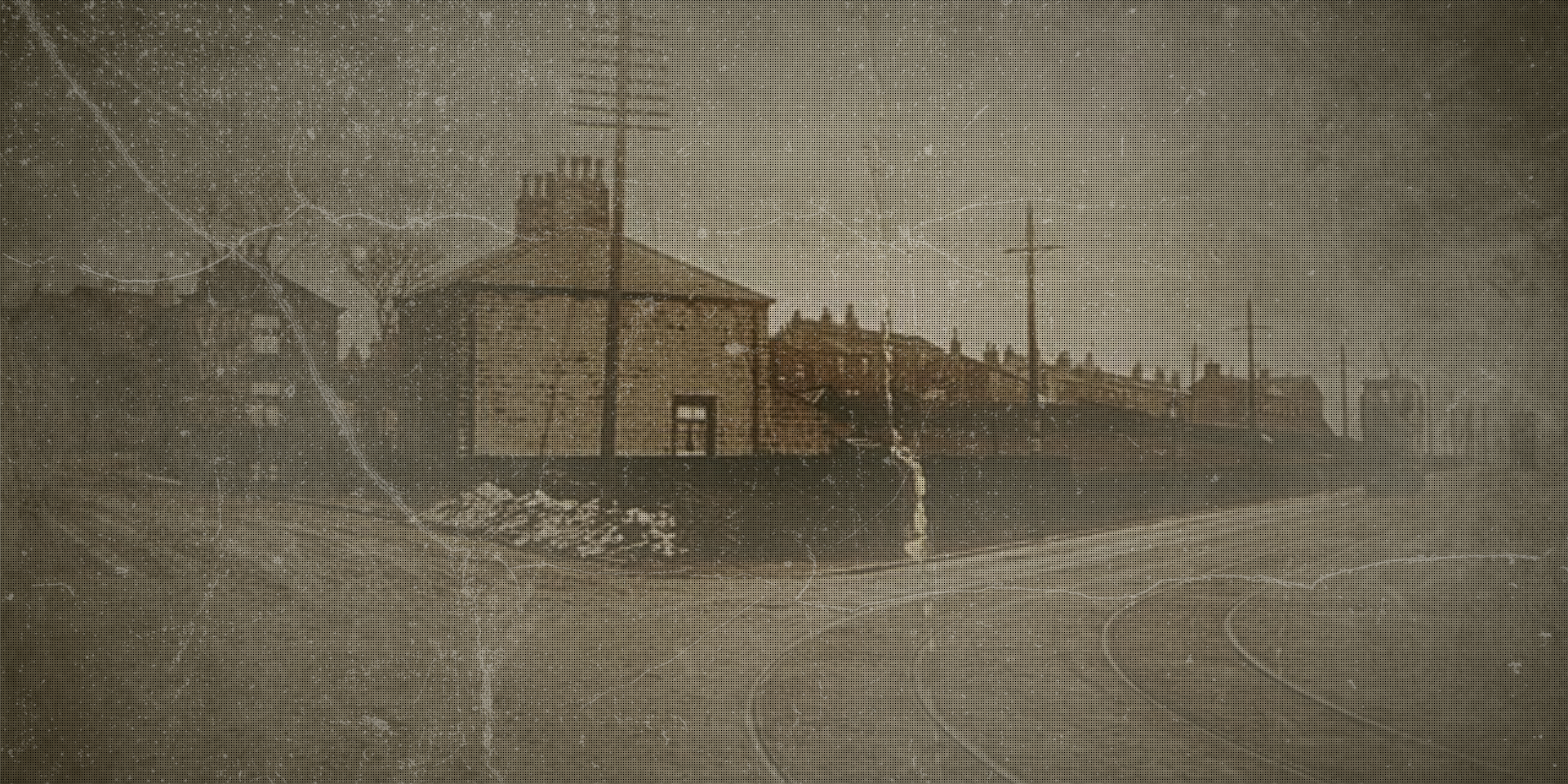
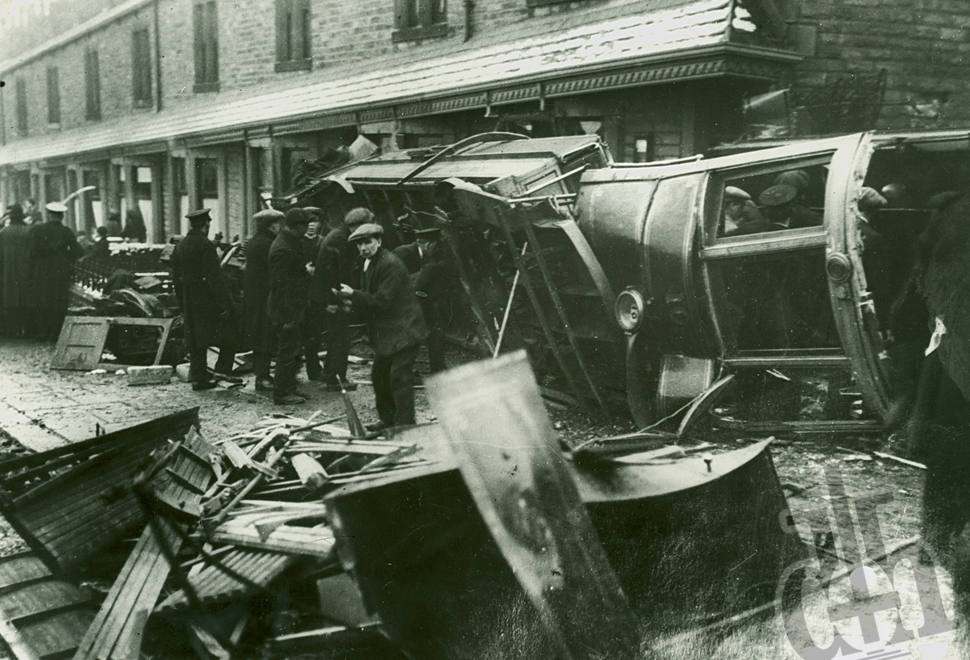
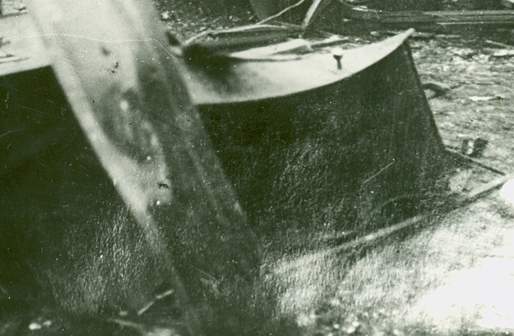
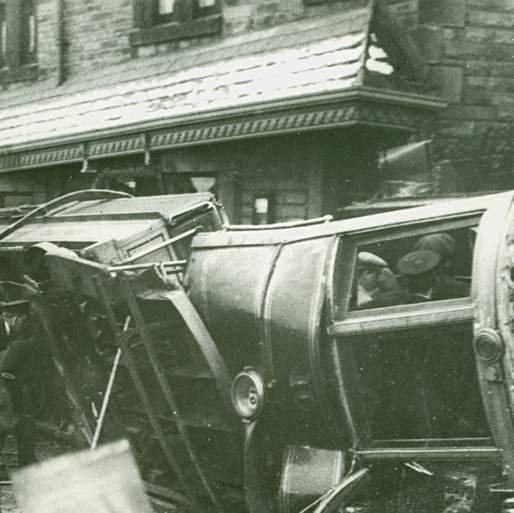
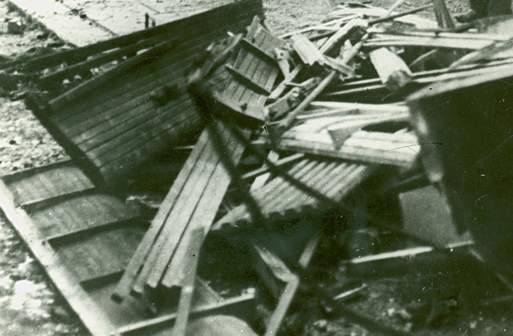
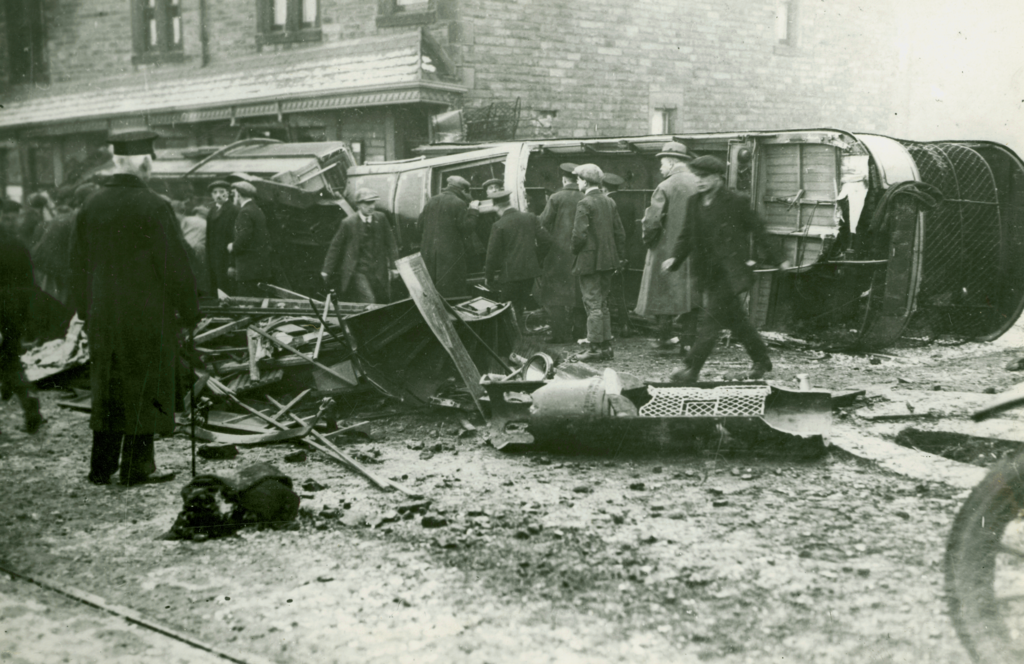
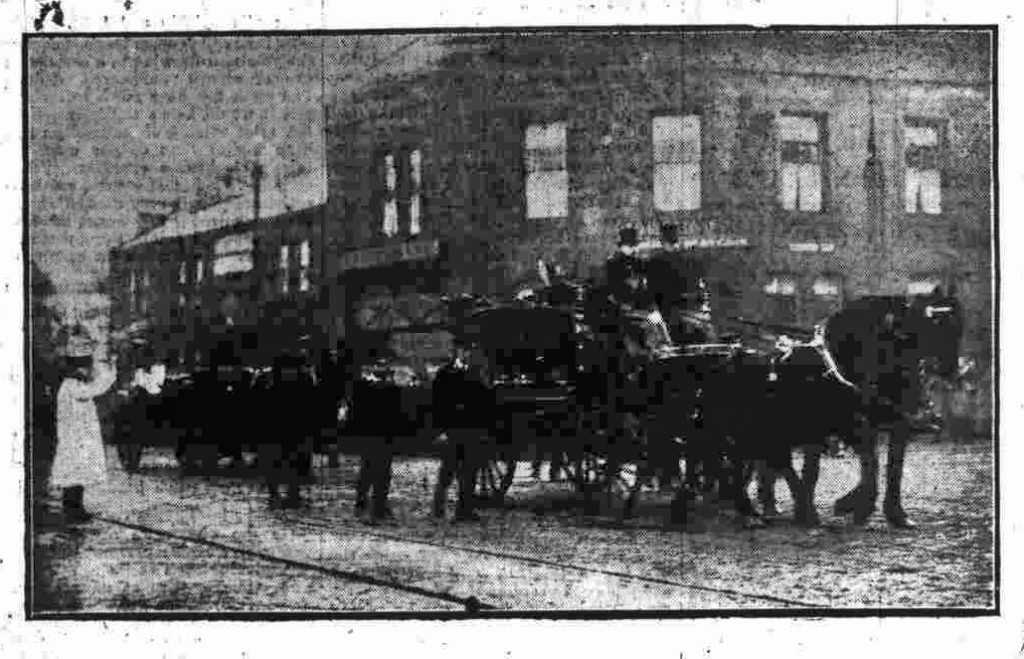
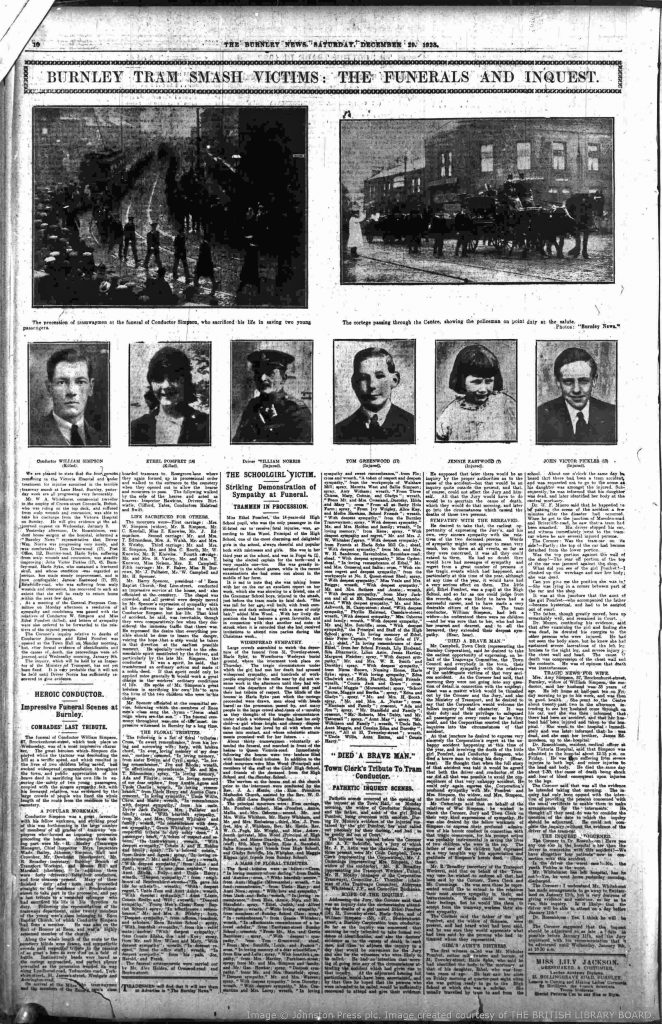
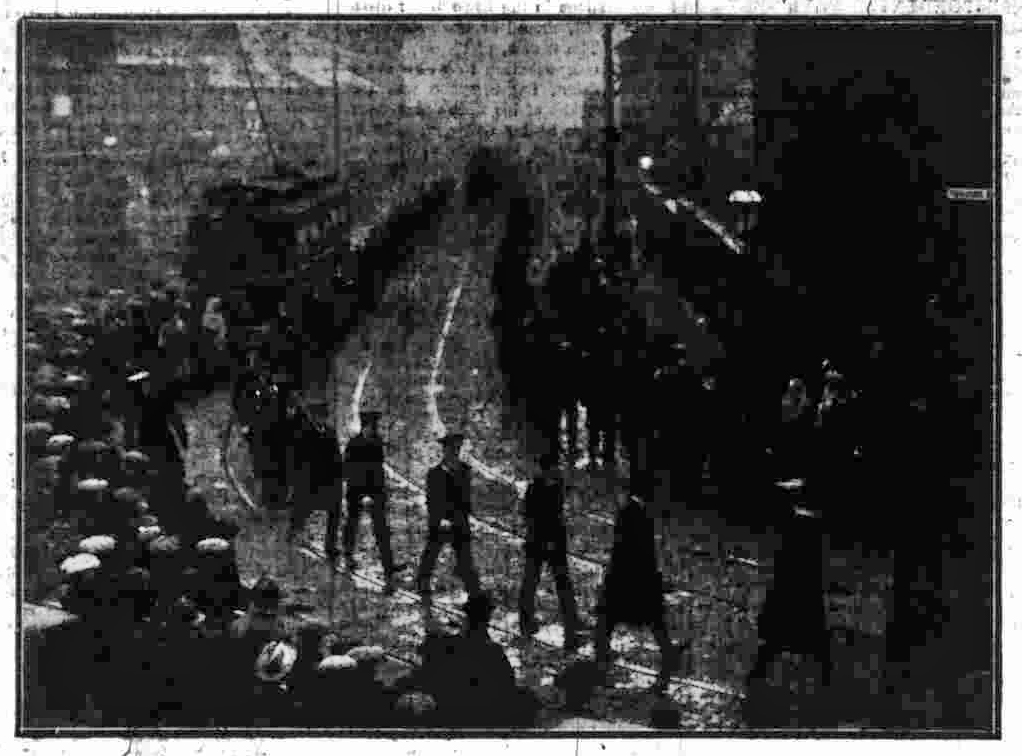

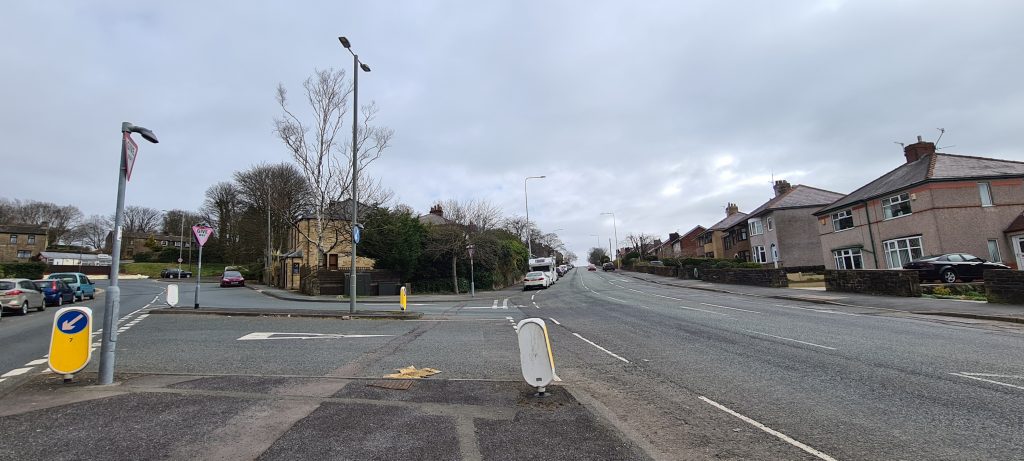
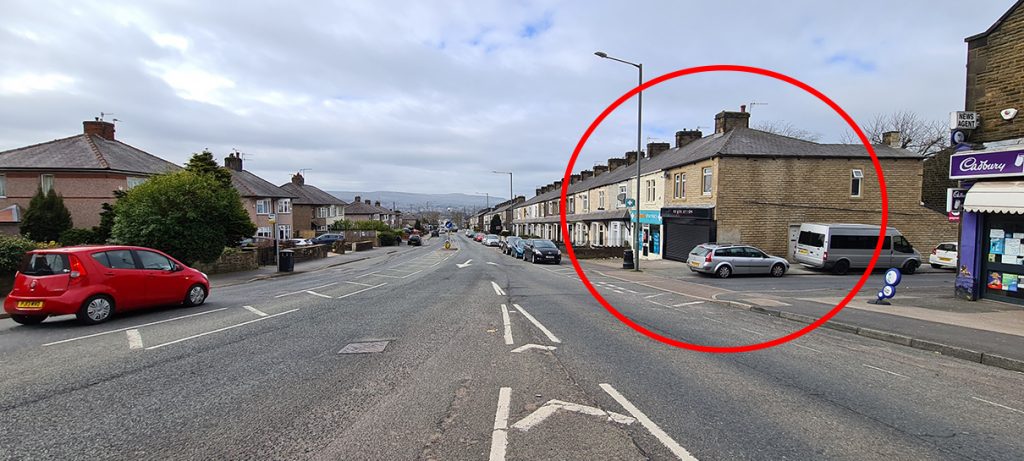
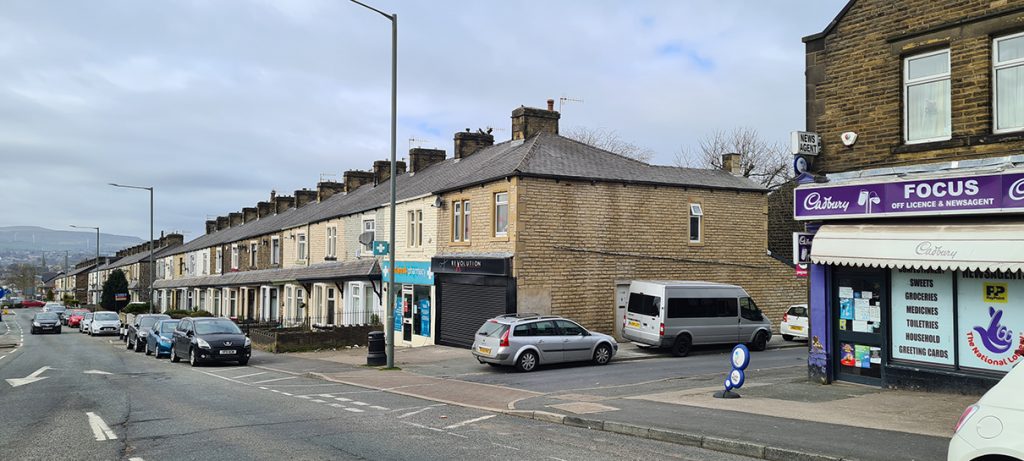
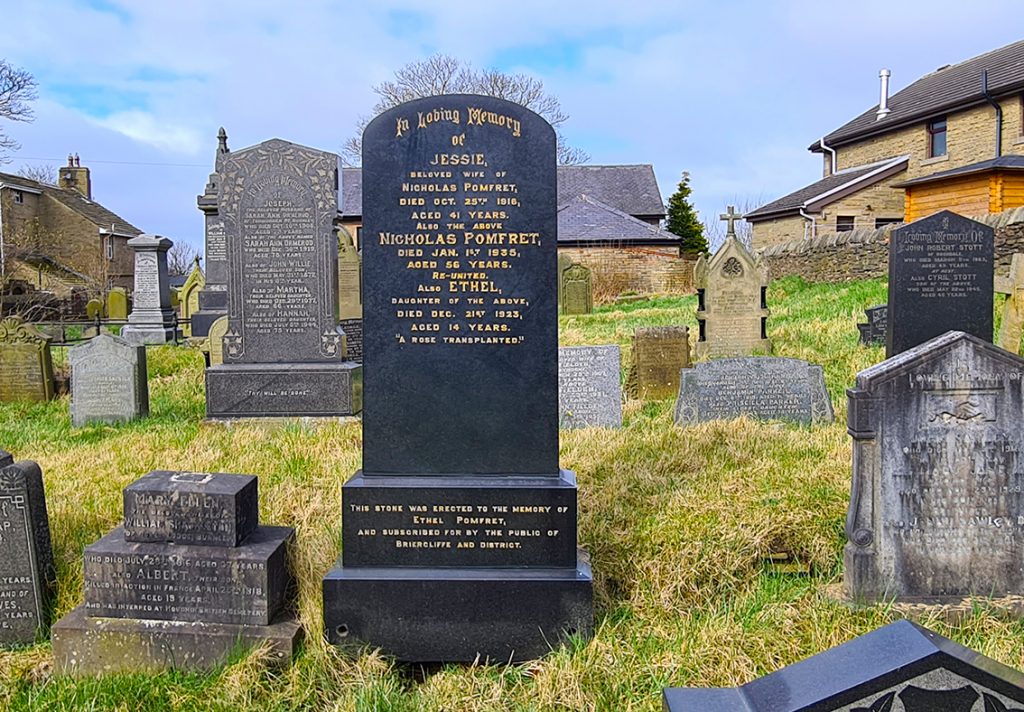
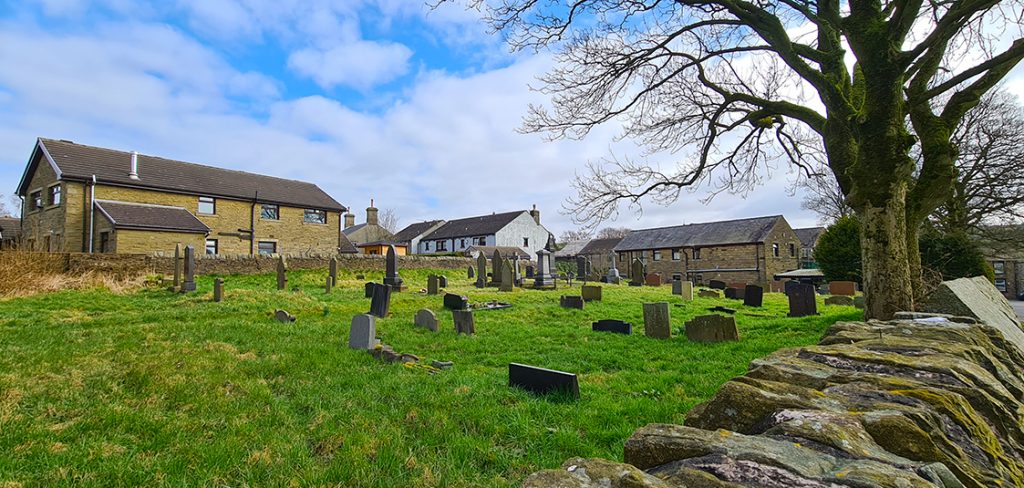
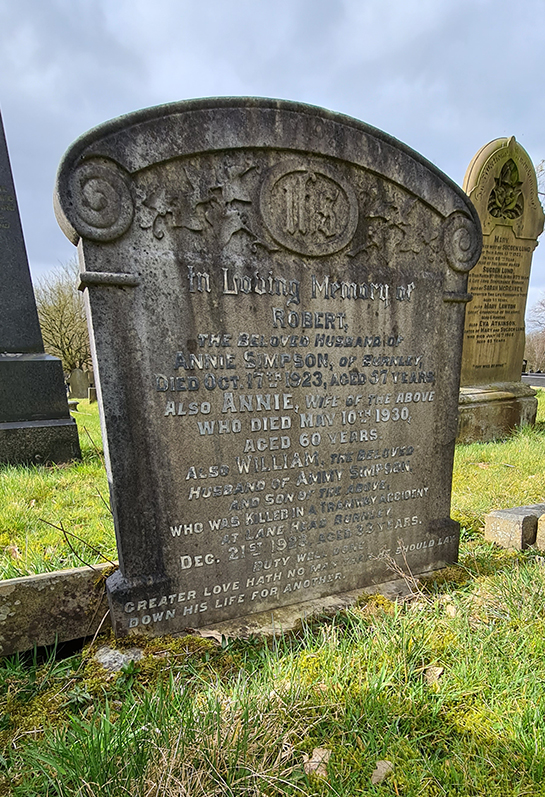
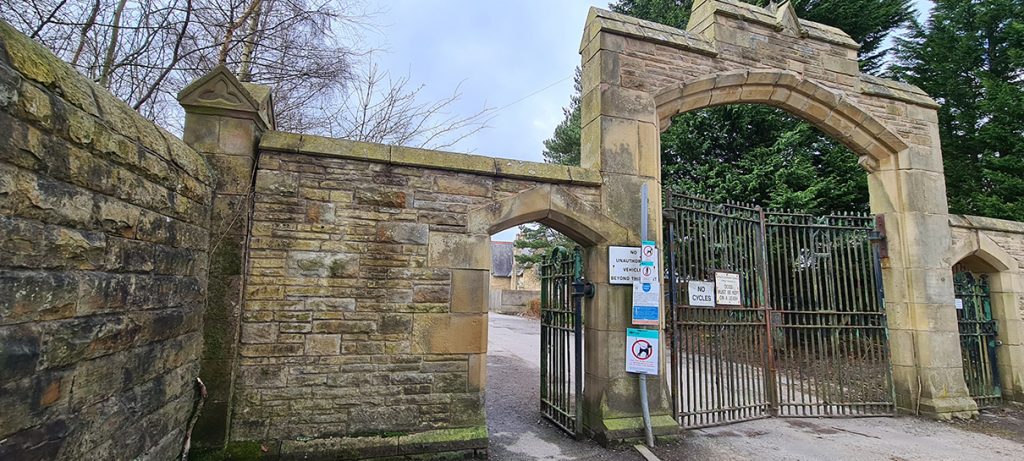
Leave a Reply